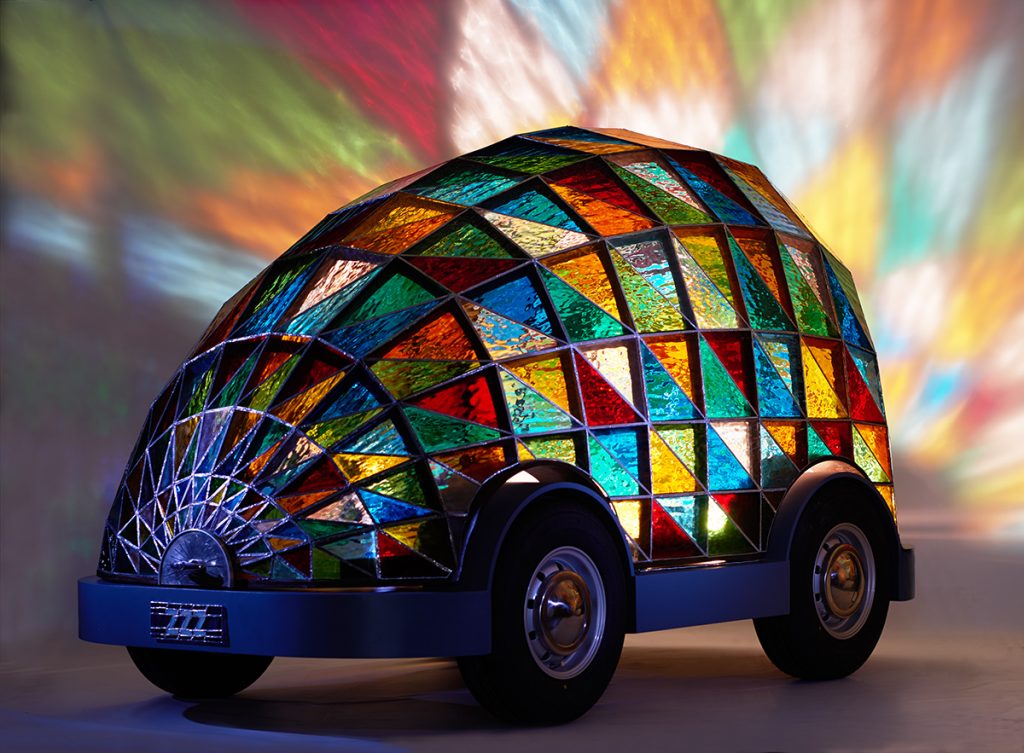
Durham Cathedral’s stained glass windows inspired artist Dominic Wilcox’s contribution to Driverless, a tiny but thought-provoking exhibition at London’s Science Museum.
It occurred to Wilcox that artificial intelligence could make traffic collisions a thing of the past, which means “we don’t need the protection systems that are built into contemporary cars”, he told design magazine Dezeen. “We can just have a shell of any design.”
His Stained Glass Driverless Sleeper Car of the Future is the sort of vehicle we may be driving when road safety has improved to the point where we can build cars out of whatever we want. It suggests a future in which safety is no longer a set of barriers, cages, buffers and lights, and is instead a dance of algorithms. Rather than measuring out a bike lane, say, we will have an algorithm that decides whether to leave a smaller distance to the bicycle on its left to reduce the chance of hitting a truck on its right.
What if that causes more cyclists, but fewer passengers, to die every year? Such questions aren’t new. But they are having to be asked again and in a different and disconcerting form as we move more safety systems off the roads and into vehicles.
On show is the Massachusetts Institute of Technology’s “Moral Machine”, a website using more than 40 million participants’ decisions on what to do in certain situations to inform our autonomous machinery design. The findings can be unsettling: would-be designers are more likely to sacrifice your safety if you are fat, a criminal or a dog
This is a show as much about possible futures as it is about the present. Interviews, archival footage, models and some interactive displays create a series of provocations, more than a fully fledged exhibition.
I especially liked the look of the MIT Senseable City Lab and the AMS Institute’s “Roboats”, currently on trial on Amsterdam’s canals. These autonomous floating platforms form spontaneous bridges and event platforms and can transport goods and people.
The exhibition spends much of its time off-road, investigating drone swarms and privacy, flocking behaviour and mine clearance, ocean mapping and planetary surveillance.
Don’t let its size put you off: this little show is full of big surprises.
